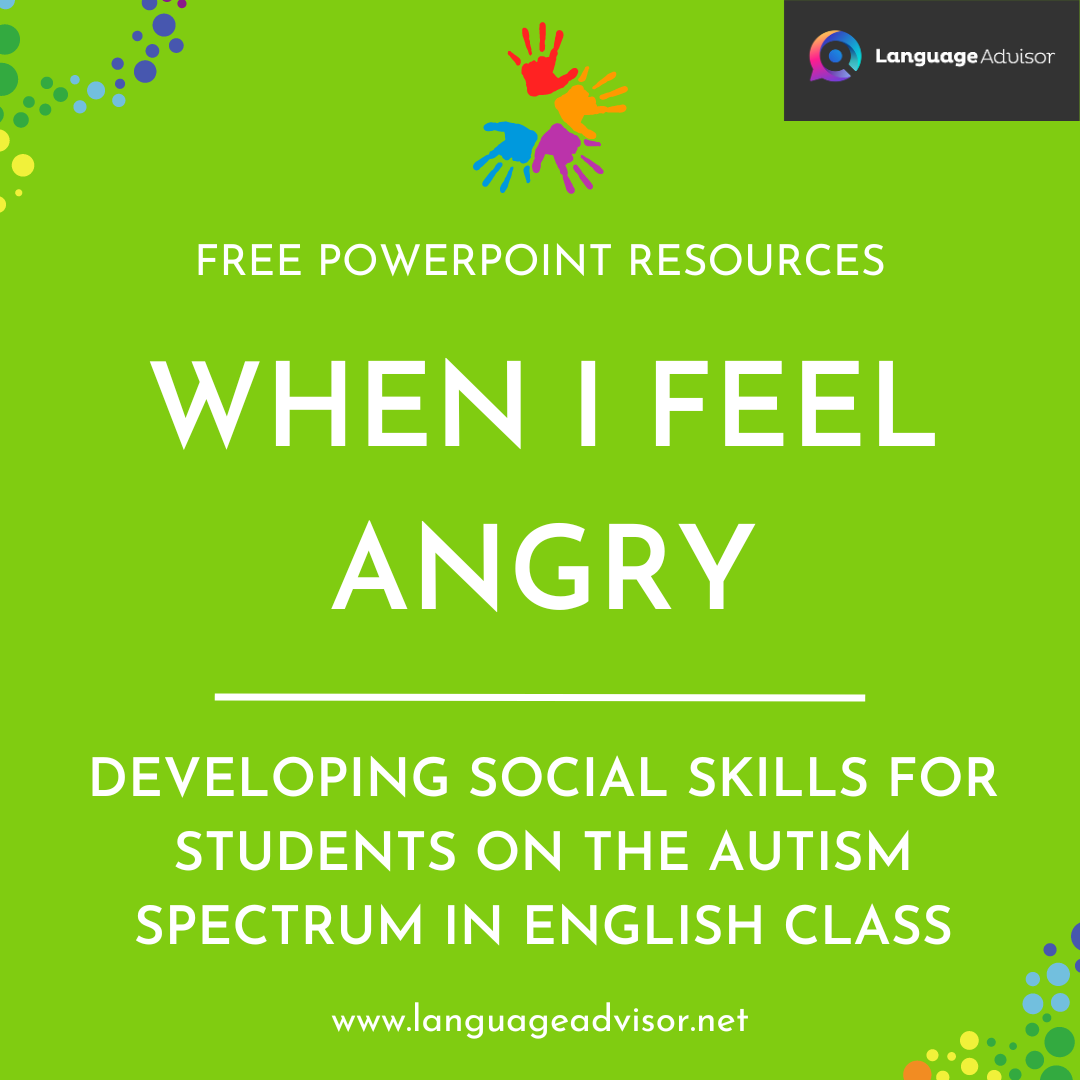When I Feel Angry – Developing Social Skills for Students on the Autism Spectrum in English Class. Free PowerPoint Resources
When I Feel Angry – Developing Social Skills for Students on the Autism Spectrum in English Class

When I Feel Angry
For students on the autism spectrum, learning patience can be especially challenging, particularly in environments that require waiting, like in a car. Whether it’s waiting in traffic, for a family member to run an errand, or during a long road trip, the car can become a source of stress and discomfort for many students. However, with the right strategies and resources, these situations can be transformed into opportunities for growth.
In this blog post, we’ll explore ways to help students on the autism spectrum develop patience while in the car. We also offer a free PowerPoint presentation filled with activities and tips designed to make learning patience more engaging and manageable.
Why Focus on Patience in the Car?
Patience is an essential life skill that helps individuals manage frustration and stay calm in stressful situations. Teaching students on the autism spectrum to practice patience in the car can:
- Reduce anxiety related to waiting and help them feel more comfortable during travel.
- Improve coping strategies by providing tools for managing feelings of impatience or boredom.
- Enhance family outings by creating a more positive atmosphere during travel, allowing everyone to enjoy the experience.
By incorporating patience-building exercises into car rides, we can help students learn to navigate these challenging situations more effectively.
Key Patience Skills to Develop
When working with students on the autism spectrum, it’s helpful to focus on specific patience-related skills, including:
- Waiting calmly: Learning to remain calm and engaged during times of inactivity.
- Coping with boredom: Finding productive ways to deal with feelings of boredom or restlessness during travel.
- Using positive self-talk: Encouraging students to use affirmations or phrases to help manage impatience.
Free PowerPoint Resources
We’ve created a free PowerPoint presentation that can assist students in developing patience while in the car. This resource is designed to be fun, interactive, and adaptable for different age groups and skill levels.
1. Patience Social Stories
The PowerPoint includes social stories that explain specific situations related to patience in the car. These stories cover scenarios like:
- What to do when waiting in the car for someone to return.
- Strategies for staying calm during traffic jams.
- Positive ways to cope with long car rides.
These stories can help set clear expectations, reducing anxiety and preparing students for what to expect.
2. Patience Challenge Activities
The PowerPoint features interactive challenges that encourage students to practice patience through engaging activities that can be done while in the car, such as:
- A “Waiting Bingo” game where students can mark off items they see while waiting.
- A “Car Ride Checklist” for things to do during travel, like playing games or reading a book.
- Reflection prompts for students to share their experiences of waiting patiently.
These challenges make waiting a fun and productive activity.
3. Calming Techniques Slides
Teaching students calming techniques can be very beneficial during stressful moments in the car. The PowerPoint includes slides that outline simple techniques to help students manage their emotions, such as:
- Deep breathing exercises.
- Counting to ten slowly.
- Using positive affirmations, like “I can wait calmly.”
These techniques can be easily accessed during travel, providing immediate support when patience is needed.
4. Interactive Car Games
Engaging students in interactive games can keep their minds occupied during long car rides. The PowerPoint provides a list of car games that promote patience and attention, such as:
- I Spy: A classic game that encourages observation and waiting for turns.
- 20 Questions: A fun way to encourage critical thinking while practicing patience during discussions.
- The Alphabet Game: Finding letters on signs or vehicles, promoting focus and engagement.
These games help students stay entertained and reinforce the idea that waiting can be enjoyable.
How to Use These Resources
This free PowerPoint can be easily integrated into car rides or travel planning. Here’s how to use it effectively:
- Before the Journey: Review the patience social stories in the PowerPoint to prepare students for what to expect during the trip.
- During Travel: Utilize the patience challenge activities and calming techniques slides as needed. Encourage students to participate in car games to keep them engaged.
- Post-Trip Reflection: After the journey, have students reflect on their experiences using the prompts provided in the PowerPoint. Discuss what strategies worked best for them in managing impatience.
Conclusion
Helping students on the autism spectrum develop patience, especially during car rides, is an essential part of their growth and self-regulation. By utilizing strategies and resources that promote patience in a fun and engaging way, we can foster a more positive travel experience for everyone involved.
We hope this free PowerPoint presentation serves as a valuable tool to support students in developing their patience skills. Download the presentation today and transform car rides into opportunities for learning and growth.
With this resource, you can help students on the autism spectrum learn patience in the car while enjoying the journey. Happy travels!

When I Feel Angry
It is best to customize this story for each individual child by incorporating the child’s name and photos and altering any words and pictures to best meet your child’s learning needs and preferences.
DOWNLOAD THE POWER POINT FOR FREE





